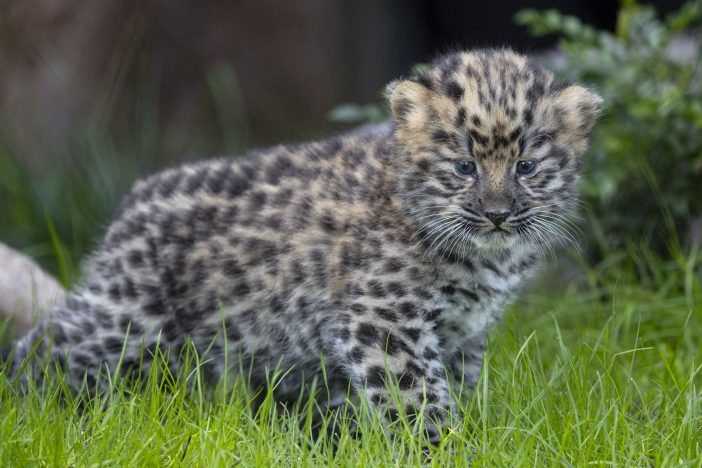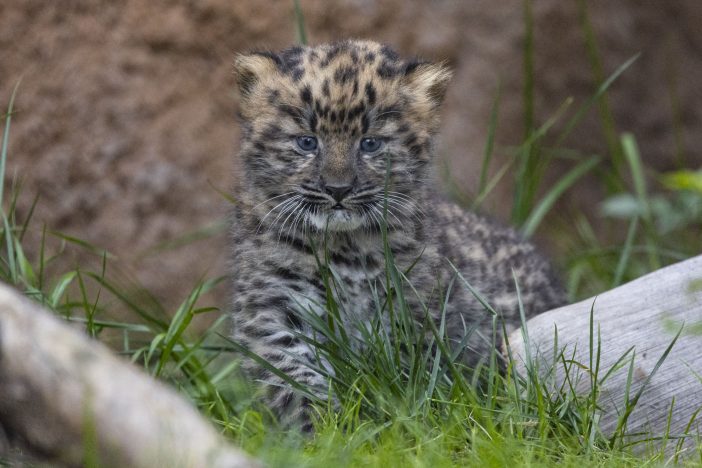Amur Leopards Born at San Diego Zoo! Free Printable Activity Sheets!
To Celebrate the birth of two rare Amur Leopards at the world famous San Diego Zoo, we are sharing photos and coloring pages! The San Diego Zoo is known world-wide for their conservation work. Two new endangered Amur leopards are thriving and giving hope for their species. Please enjoy the photos provided by the San Diego Zoo to share with permission. Please also feel free to print out the coloring page and activity sheets provided on this site.
Amur Leopards Facts
*Amur Leopards are very rare in the wild.
*Amur Leopards are mostly found in Russia and China and are illegal to hunt.
* Amur Leopards population is critically low, but is slowly increasing in the wild and in captivity.
*Amur Leopards have spots as unique as finger prints. Each cat has a different pattern on their fur.
San Diego Zoo Wildlife Alliance Celebrates Birth of Two Rare Amur Leopards
The Cubs, Born at the San Diego Zoo, Increase Population of the World’s Most Endangered Big Cat Species
The birth of twins is exceptional, no matter the species. However, when those twins are Amur leopards—and fewer than 300 of those big cats are estimated to exist on Earth—the births are especially significant. This week, wildlife care staff at the San Diego Zoo announced the birth of two Amur leopard cubs, increasing this rare cat’s estimated worldwide population by two and furthering the nonprofit conservation organization’s ongoing work to save this vital Asian species.
“Witnessing the birth of Amur leopards is always an emotional experience,” said Gaylene Thomas, wildlife care manager at the San Diego Zoo. “There are so few of them left in their native habitat that every birth carries so much weight—and every living individual promises a glimmer of hope.”
The yet-to-be-named cubs have finally emerged from their quiet birthing den with their mother, Satka, allowing Zoo guests a chance to get their first glimpse of the tiny cats. Over the past several weeks, wildlife care specialists have been closely monitoring the cubs through a remote camera system, analyzing their behaviors and documenting their development. That initial hands-off approach was crucial, as it allowed the youngsters to bond with and learn from their mother.
“We are absolutely thrilled with the progress made by the cubs,” said Thomas. “They have grown so much, and have already started showcasing their unique personalities. The cubs will get their first full veterinary exam soon, and we will know more, including their sex.”
The cubs were born as part of a breeding recommendation through the Association of Zoos and Aquariums’ Amur Leopard Species Survival Plan (SSP). Each SSP program, overseen by conservationists nationwide, ensures genetic diversity and healthy, self-sustaining assurance populations of threatened and endangered wildlife. This is the third Amur leopard litter born at the San Diego Zoo. The first litter was in April 2018 (with two females), and the second was in April 2020 (with two males). All three were naturally sired by male Amur leopard Oskar.
Amur leopards are categorized as Critically Endangered on the International Union for Conservation of Nature (IUCN) Red List of Threatened Species because of tremendous habitat loss and poaching for their thick, spotted coats. Once numerous throughout northeastern China, Russia and the Korean peninsula, there are currently fewer than 300 Amur leopards left on earth, and fewer than 100 remain in their historic range in the Primorye region of the Russian Far East. The rest are in managed human care. San Diego Zoo Wildlife Alliance and other accredited zoological organizations have joined in conserving this critical species. More than 94 institutions caring for over 220 leopards participate in the Global Species Management Program (GSMP), an international conservation effort in which scientists work to increase regional wildlife populations.
“San Diego Zoo Wildlife Alliance’s work in Asia is essential for conserving endangered species that call that region home,” said Dr. Nadine Lamberski, chief conservation and wildlife health officer for San Diego Zoo Wildlife Alliance. “The good news is, we see positive results. For example, through the efforts of numerous on-the-ground conservation organizations and zoological institutions, the Amur leopard population has recently increased by more than 50 percent. This is a monumental achievement, proving that conservation works and our vision to build a world where all life thrives can be realized. We only need to maintain the course, and ultimately, we will succeed.”
About San Diego Zoo Wildlife Alliance
San Diego Zoo Wildlife Alliance is a nonprofit international conservation leader, committed to inspiring a passion for nature and working toward a world where all life thrives. The Alliance empowers people from around the globe to support their mission to conserve wildlife through innovation and partnerships. San Diego Zoo Wildlife Alliance supports cutting-edge conservation and brings the stories of their work back to the San Diego Zoo and San Diego Zoo Safari Park—giving millions of guests, in person and virtually, the opportunity to experience conservation in action. The work of San Diego Zoo Wildlife Alliance extends from San Diego to eco-regional conservation “hubs” across the globe, where their expertise and assets—including the renowned Wildlife Biodiversity Bank—are able to effectively align with hundreds of regional partners to improve outcomes for wildlife in more coordinated efforts. By leveraging these skills in wildlife care and conservation science, and through collaboration with hundreds of partners, San Diego Zoo Wildlife Alliance has reintroduced more than 44 endangered species to native habitats. Each year, San Diego Zoo Wildlife Alliance’s work reaches over 1 billion people in 150 countries via news media, social media, their websites, educational resources and the San Diego Zoo Wildlife Explorers television programming, which is in children’s hospitals in 13 countries. Success is made possible by the support of members, donors and guests to the San Diego Zoo and San Diego Zoo Safari Park, who are Wildlife Allies committed to ensuring all life thrives.





